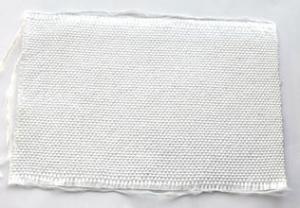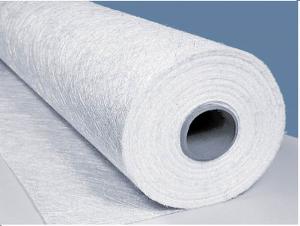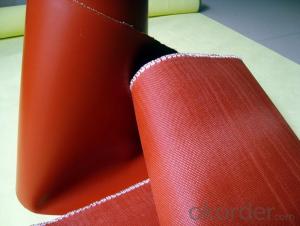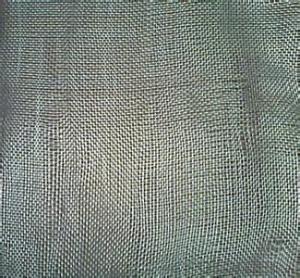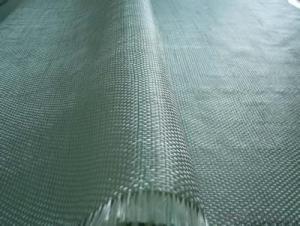Silica84 Fiberglass Fabrics High Silica Fiber Cloth
- Loading Port:
- China Main Port
- Payment Terms:
- TT OR LC
- Min Order Qty:
- -
- Supply Capability:
- -
OKorder Service Pledge
Quality Product, Order Online Tracking, Timely Delivery
OKorder Financial Service
Credit Rating, Credit Services, Credit Purchasing
You Might Also Like
Quick Details
| Place of Origin: | Brand Name: | Model Number: | |||
| Weight: | Width: | Weave Type: | |||
| Yarn Type: | Alkali Content: | Standing Temperature: | |||
| applications: |
Packaging & Delivery
| Packaging Detail: | rolls packed in cartons loaded on pallets |
| Delivery Detail: | within 15 days after order confirmation |
Specifications
1.withstand temperature up to 1000 degree
2.weight:about 600g/m2
3.applications:heavy duty welding protection;
- Q: How is fiberglass fabric used in the production of insulation papers?
- Fiberglass fabric is commonly used in the production of insulation papers due to its excellent thermal properties and durability. The fabric is usually made from fine strands of glass fibers that are woven together to form a strong and flexible material. In the production of insulation papers, fiberglass fabric is often used as a reinforcement layer. It is placed between layers of paper or other insulating materials to provide added strength and stability. The fabric helps to prevent tearing or ripping of the insulation papers, ensuring their longevity and effectiveness. Moreover, fiberglass fabric is also highly resistant to heat, making it an ideal choice for insulation applications. It can withstand high temperatures without melting or degrading, allowing it to effectively retain and reflect heat within the insulation system. This property is crucial in preventing heat loss or gain, leading to energy efficiency and cost savings. Furthermore, the use of fiberglass fabric in insulation papers enhances their fire resistance capabilities. Fiberglass is inherently non-combustible and does not contribute to the spread of flames. When incorporated into insulation papers, it acts as a barrier against fire, helping to contain and limit its spread. Overall, fiberglass fabric plays a vital role in the production of insulation papers by providing strength, thermal insulation, and fire resistance. Its use ensures that the insulation materials are durable, energy-efficient, and safe, making it a preferred choice in various industries such as construction, automotive, and aerospace.
- Q: How does fiberglass fabric perform in vibration damping applications?
- Fiberglass fabric performs well in vibration damping applications due to its high strength-to-weight ratio, excellent stiffness, and low density. It effectively absorbs and dissipates vibrations, reducing the amplitude and dampening the resonance frequency of the structure. Additionally, its flexibility allows for easy installation and adaptability to various shapes and sizes, making it a preferred choice in industries such as automotive, aerospace, and construction.
- Q: What are the different weights of fiberglass fabric?
- Fiberglass fabric, also referred to as fiberglass cloth, can be found in a variety of weights or thicknesses. The weight of the fabric is determined by measuring the ounces per square yard (oz/yd²) or grams per square meter (g/m²). The range of weights for fiberglass fabric typically spans from 3 oz/yd² (102 g/m²) to 50 oz/yd² (1695 g/m²). The weight of the fiberglass fabric plays a significant role in determining its strength, durability, and suitable applications. For applications that require flexibility, such as boat building, surfboard manufacturing, and automotive parts, lighter weight fiberglass fabrics (3-6 oz/yd² or 102-204 g/m²) are commonly used. These fabrics are also appropriate for repairs and smaller projects. Medium-weight fiberglass fabrics (7-20 oz/yd² or 238-680 g/m²) are often chosen for general-purpose applications like laminating, molding, and reinforcing structures. They offer a good balance between strength and flexibility, making them well-suited for a wide range of projects, including composite manufacturing, construction, and aerospace applications. On the other hand, heavier weight fiberglass fabrics (21-50 oz/yd² or 714-1695 g/m²) are employed in applications that require exceptional strength and rigidity. These fabrics are frequently used in industries such as marine, wind energy, and infrastructure, where materials with high-strength properties are necessary to withstand intense conditions and structural loads. It's worth noting that the specific weight of fiberglass fabric may vary depending on the manufacturer and the intended application. Therefore, it is always advisable to consult the product specifications provided by the manufacturer to ensure the appropriate weight is selected for a specific project.
- Q: Is fiberglass fabric resistant to pests in agricultural settings?
- Yes, fiberglass fabric is generally resistant to pests in agricultural settings. Its non-porous and smooth surface makes it difficult for pests to chew through or attach to, making it an effective barrier against common agricultural pests such as rodents, insects, and birds. Additionally, fiberglass fabric is not susceptible to rot or decay, further preventing pest infestations.
- Q: Are fiberglass fabrics suitable for use in the oil and gas industry?
- Fiberglass fabrics are indeed suitable for utilization in the oil and gas sector, offering numerous benefits that make them highly appropriate for diverse applications within this industry. To begin with, the resistance of fiberglass fabrics to corrosion and chemicals is exceptionally high, rendering them perfect for deployment in environments where exposure to oil, gas, and other corrosive substances is prevalent. This resistance ensures the longevity and durability of the fabric, minimizing the need for frequent replacements and maintenance. Furthermore, the thermal insulation properties of fiberglass fabrics are excellent, a crucial characteristic in the oil and gas industry, where encountering high temperatures is common. These fabrics have the capacity to endure extreme heat and safeguard equipment and personnel from thermal hazards. In addition, fiberglass fabrics possess remarkable traits of being lightweight, yet strong and flexible, simplifying their handling and installation. This feature proves particularly advantageous in applications that necessitate the creation of intricate shapes or structures, such as insulation jackets or protective covers. Moreover, fiberglass fabrics exhibit commendable electrical insulation properties, thereby reducing the risk of electrical hazards in oil and gas operations. They can serve as insulation materials for electrical equipment, cables, and pipelines, ensuring safe and dependable operations. Finally, fiberglass fabrics possess a high dielectric strength, enabling them to withstand high voltage and prevent electrical arcing. This quality holds exceptional importance in the oil and gas industry, where the potential for electrical accidents can be significant. To summarize, fiberglass fabrics are highly suitable for use in the oil and gas industry due to their corrosion resistance, thermal insulation properties, lightweight and flexible nature, electrical insulation capabilities, and high dielectric strength. These attributes establish them as dependable and efficient materials for a wide range of applications within this industry.
- Q: Can fiberglass fabric be used for making air ducts?
- Yes, fiberglass fabric can be used for making air ducts. Fiberglass fabric is a versatile material that is commonly used in various industries, including HVAC. It offers several advantages for air duct applications. Firstly, fiberglass fabric is lightweight, which makes it easier to handle and install in comparison to other materials such as sheet metal. This can lead to faster and more cost-effective installation processes. Secondly, fiberglass fabric is non-porous, which means it is resistant to moisture, mold, and mildew. This is particularly important in air ducts as it helps to maintain indoor air quality by preventing the growth of harmful bacteria and fungi. Additionally, fiberglass fabric has excellent thermal insulation properties. It can effectively retain heat or cold air, which helps to improve energy efficiency by reducing heat transfer and minimizing energy losses. Moreover, fiberglass fabric is also known for its fire-resistant properties, making it a safe choice for air duct applications. It has a high melting point and does not emit toxic gases when exposed to fire, which can be crucial in ensuring the safety of the occupants in case of a fire incident. Lastly, fiberglass fabric is flexible and can be easily molded and shaped to fit different duct configurations, including bends and turns. This flexibility allows for easy customization and adaptation to various building layouts. Overall, fiberglass fabric is a suitable material for making air ducts due to its lightweight, non-porous, thermal insulation, fire-resistant, and flexible properties. However, it is important to ensure that the fiberglass fabric used for air ducts meets the necessary industry standards and regulations to ensure proper performance and safety.
- Q: Can fiberglass fabrics be used for reinforcement purposes?
- Yes, fiberglass fabrics can be used for reinforcement purposes. Fiberglass is a strong and lightweight material that is commonly used in various industries for reinforcing structures. It is widely used in the construction industry to reinforce concrete by adding strength and durability to the structure. Fiberglass fabrics are also used in the automotive industry to reinforce various parts of vehicles, such as car bodies and panels. Additionally, fiberglass fabrics are used in the marine industry to reinforce boat hulls and decks. The high tensile strength and resistance to corrosion make fiberglass fabrics an ideal choice for reinforcement purposes. Furthermore, fiberglass fabrics can be easily molded into complex shapes, making them highly versatile for a wide range of applications.
- Q: Is fiberglass fabric resistant to chemicals in pharmaceutical industry?
- Yes, fiberglass fabric is generally resistant to chemicals in the pharmaceutical industry. Fiberglass is made from glass fibers that are woven together, creating a strong and durable fabric. This fabric is known for its resistance to many chemicals, including those commonly used in the pharmaceutical industry such as acids, alkalis, solvents, and various cleaning agents. Fiberglass fabric is also non-reactive, meaning it does not readily interact with chemicals or release harmful substances. This makes it a suitable choice for applications where chemical resistance is important, such as in the pharmaceutical industry where the fabric may come into contact with various chemicals during manufacturing processes or in cleanrooms. However, it is important to note that the specific type of fiberglass fabric and the specific chemicals involved should be considered to ensure proper compatibility and resistance.
- Q: How long does fiberglass fabric typically last?
- Fiberglass fabric is known for its durability and longevity, making it a popular choice for various applications. The lifespan of fiberglass fabric can vary depending on several factors, such as the quality of the fabric, its exposure to external conditions, and how well it is maintained. On average, fiberglass fabric can last anywhere from 10 to 30 years. However, with proper care and maintenance, it is possible for it to last even longer. Regular cleaning, preventing excessive exposure to harsh chemicals or extreme temperatures, and avoiding physical damage can significantly prolong the lifespan of fiberglass fabric. It is important to note that fiberglass fabric can become brittle and lose its structural integrity over time, especially if exposed to continuous high temperatures or harsh environmental conditions. Additionally, natural wear and tear can also contribute to its eventual deterioration. To ensure the longest possible lifespan for fiberglass fabric, it is advisable to follow the manufacturer's guidelines regarding maintenance and care. Regular inspections for signs of damage or wear, and prompt repairs or replacements when necessary, can help extend the life of fiberglass fabric.
- Q: What material can be used instead of fiberglass cloth?
- Glass fiber cloth has many kinds of specifications and thickness, can be purchased as needed, non-woven fabrics without glass fiber fabric, strong, and generally can not be replaced.
Send your message to us
Silica84 Fiberglass Fabrics High Silica Fiber Cloth
- Loading Port:
- China Main Port
- Payment Terms:
- TT OR LC
- Min Order Qty:
- -
- Supply Capability:
- -
OKorder Service Pledge
Quality Product, Order Online Tracking, Timely Delivery
OKorder Financial Service
Credit Rating, Credit Services, Credit Purchasing
Similar products
Hot products
Hot Searches
Related keywords
